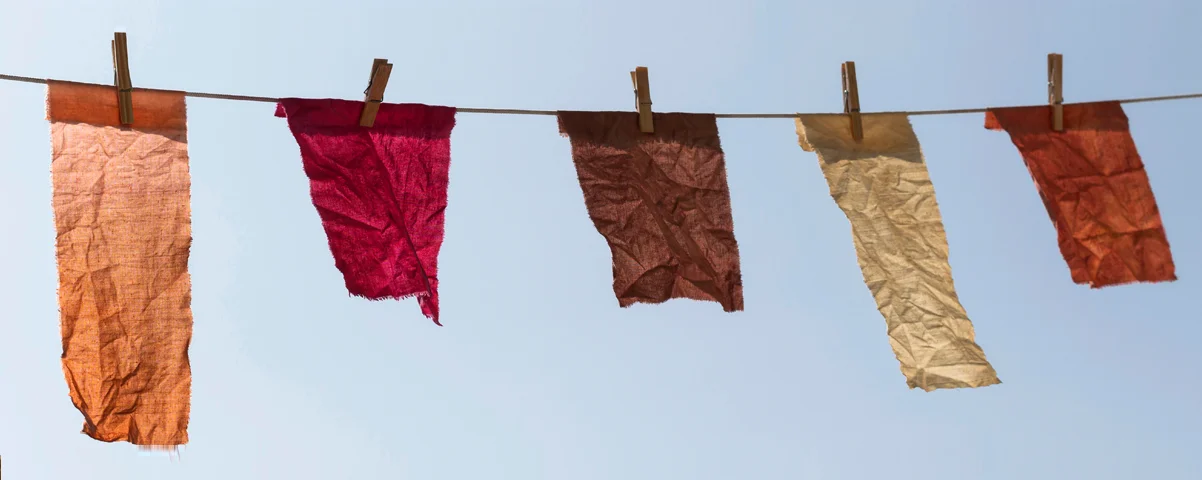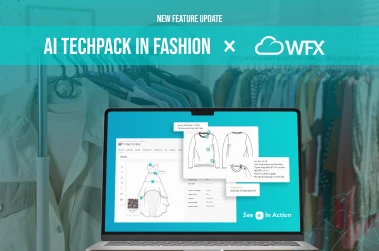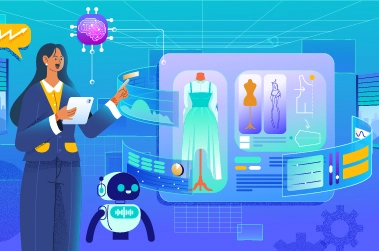1. Supply chain traceability
If you want to make fashion sustainable, it’s important to start with the supply chain. A lot of brands claim that their clothes are made of “eco” materials that are “recyclable,” but that doesn’t mean much if the factories they’re made in are polluting — often transnationally. However, technology and digitalization have brought a new transparency to supply chains, giving you more information about where your clothes come from.
Brands can’t ensure the sustainability of their products without traceability. Because it’s impossible to monitor every single supply chain link manually, automatic tracing systems are necessary.
Blockchain—a digital and secure ledger for all transactional information—could be the best way to achieve supply chain transparency. It allows brands to collect data down to the farm level, and to track their products from the factory through to retail shelves using one shared ledger. This means that if a brand claims that their products are made from 100% organic cotton, you can literally trace exactly which farm the cotton came from.
And, as supply chain transparency laws continue to gain momentum in the EU and other countries, you might want to consider making your business more digitally accessible.
2. New-gen alternative materials
Some start-ups like MycoWorks and Bolt Threads are finding ways to apply the principles of materials science to fashion design. They’re fuelling an important conversation about the viability of mushroom leather and other bio-based fabrics for wide commercial use. The materials created by these companies are costly to produce, but the market for sustainable brands is flourishing right now. Consumers will pay a premium for sustainably made clothing, particularly if it helps to reduce their carbon footprint.
Clothes made from recycled textiles, regeneratively farmed cotton, and plant-based leather are becoming key identifiers for brands positioning themselves as sustainable. Stella McCartney, who made sustainability fashionable, has inspired up-and-coming designers—Bethany Williams, Ahluwalia, Damson Madder, Stefania Vaidani, and Yasmina Q—to do the same.
We’re also seeing that some traditional brands such as Hermès, Timberland, Adidas, Kering and Nike are developing or have released products made from new-generation materials to improve the sustainability of their products.
3. Digital fashion
Fashion is moving to the digital realm, and there’s no doubt about it. Virtual fashion even made its way to London Fashion Week in 2021, when the brand Auroboros became the first to present a purely digital ready-to-wear collection. Start-ups like DressX and Fabricant are becoming increasingly popular by selling digital clothes for video games, Zoom meetings, social media and Metaverse.
Immersive virtual reality environments are set to change the fashion industry, replacing physical fashion with digital fashion. This may be good news for sustainable fashion enthusiasts. A key problem of ‘fast fashion’ is that we quickly discard garments because repeating outfits on social media might be seen as a cardinal sin. But with ‘digital fashion’, this is less of an issue because CO2 emissions from virtual clothes are 97% lower than physical clothes.
Digital clothes are a unique way to solve fashion’s overproduction problem. Currently, the fashion industry is damaging the environment with its obsession with trends. By limiting physical production to what is necessary and letting the crazing trends flow through social media, we can have our cake and eat it too.
So, it might not be a bad idea to convert 10-15% of our wardrobes into digital clothes as predicted by Caroline Rush, CEO of the British Fashion Council.
4. Rent, resale and thrift
Thanks to online marketplaces, buying second-hand and thrifting is more popular than ever. Shoppers and brands are growing a $130 million market for resale fashion, a market that’s been steadily growing thanks to online platforms like The RealReal, ThredUp, Depop, and Vestiaire Collective. ThredUp estimates that the market for second-hand apparel and accessories will reach $77 billion by 2050.
In 2020 and 2021, fashion trends reflected an explosion of aesthetic fashion—a movement that created visibility around sustainable subcultures. Earning its own category in Google’s Year in Search data, these sustainability-advocating subcultures flooded social media with content around thrifting, styling vintage fashion, and upcycling second-hand clothes. Educating, creating awareness, and encouraging people to wear their clothes longer and buy pre-loved items.
Another alternative to shopping fast fashion is ‘rental fashion’. While the jury is still out on how sustainable rental fashion actually is, it’s definitely an interesting business model to watch. Companies like Rent the Runway allow people to wear high fashion items once or twice without paying the full price on the label.
5. Using Artificial Intelligence for a better tomorrow
You might not realize it, but artificial intelligence is shaping the future of fashion. This technology enables important sustainability solutions, including second-hand clothes markets, supply chain efficiency and digital fashion design.
Artificial intelligence is helping many fashion brands make smarter business decisions by analyzing data and providing them with real-time analytics. It allows brands to reduce overstocking of inventory significantly as well as cut down on returns.
AI has also been used to develop accurate fit technology, which provides consumers with an easier shopping experience, which cuts down on ecommerce returns.
Meanwhile, advanced technologies are making it possible to personalize the customer experience to a previously unrivalled degree. Virtual fitting rooms, artificial intelligence-based recommendations, and customer feedback are making mass personalization possible.







































